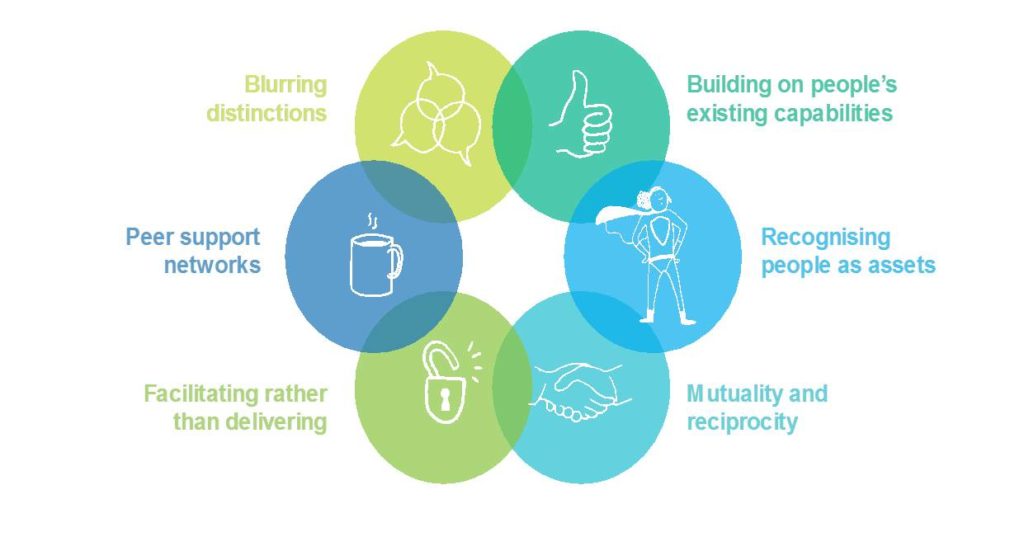Co-production is fundamental to how the Collaborative operates in designing and delivering mental health support in Lambeth. However, we acknowledge that there is some debate over its definition. The Collaborative adopted the definition originally devised by the New Economics Foundation (NEF), which comprises the 6 principles set out below:

- Recognising people as assets: people are seen as equal partners in designing and delivering services, rather than as passive beneficiaries or burdens on services or the system.
- Building on people’s capabilities: that each person has abilities and assets and people are supported to develop these. People are supported to use what they are able to do to benefit themselves, other people and their community.
- Developing two-way reciprocal relationships: all co-production processes involve some form of mutuality, a two way relationship between individuals, carers and public service professionals and between the individuals who are involved.
- Encouraging peer support networks: peer and personal networks are important to all of us; however these are often not valued or overlooked by professionals. Co-production means building these networks alongside support from professionals.
- Blurring boundaries between delivering and receiving services: the usual line or barrier between those people who design and deliver services and those who use them is blurred with more people involved in getting things done together.
- Facilitating not delivering to: public sector organisations (like local government, NHS bodies) enable things to happen, rather than always provide services themselves.In order to help people to better understand what co-production means and why we think it is so important, we developed a short animation which outlines a range of different perspectives on the concept, including psychiatry, general practice and the voluntary and community sector
We also produced a video – the story of Airdrina – which helps to outline co-production from a service design and delivery perspective:
